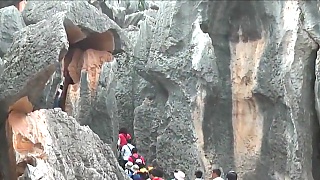
|
With Walk East ...
HeXi CBD visitor guide - NanJing
Overview
The Hexi Central Business District (Hexi CBD) is a modern and dynamic area located in the JianYe District of NanJing, China. Known for its impressive skyscrapers, luxury shopping malls, and vibrant business environment, Hexi CBD is a major commercial hub and a popular destination for both business and leisure visitors.
Getting There
Location: JianYe District, NanJing, JiangSu Province, China.
Public Transport:
By Metro: Take Metro Line 1 or Line 2 and get off at Yuantong Station, which is centrally located in Hexi CBD.
By Bus: Numerous bus lines serve the Hexi CBD area. Key stops include the Yuantong Station and NanJing International Expo Center.
By Taxi: Taxis are readily available throughout NanJing and can take you directly to Hexi CBD.
Main Attractions
Hexi CBD offers a variety of attractions and points of interest:
NanJing International Expo Center: A major venue for exhibitions, conferences, and events, attracting visitors from around the world.
JianYe Wanda Plaza: A large shopping complex offering a mix of high-end retail stores, dining options, and entertainment facilities.
Eco-Tech Island: A scenic area with green spaces, walking paths, and eco-friendly initiatives, perfect for a leisurely stroll or relaxation.
NanJing Olympic Sports Center: A state-of-the-art sports complex hosting various sports events and concerts.
Hexi Central Park: A beautiful park offering a tranquil environment with gardens, lakes, and recreational facilities.
Shopping and Dining
Hexi CBD is a paradise for shopping and dining enthusiasts:
Luxury Shopping: High-end shopping malls like Deji Plaza and JiMao Shopping Mall offer luxury brands and designer boutiques.
Local Cuisine: Experience authentic JiangSu cuisine at renowned restaurants and local eateries.
International Dining: The area features a wide range of international restaurants offering diverse cuisines from around the world.
Cafes and Bars: Numerous cafes and bars provide a perfect spot to relax, enjoy a drink, and socialize.
Business and Accommodation
Hexi CBD is a key business district with excellent facilities and accommodation options:
Business Centers: Modern office buildings and business centers host numerous multinational companies and enterprises.
Hotels: Luxury hotels such as the Jinling Riverside Hotel and Hilton NanJing offer top-notch accommodation and amenities for business travelers.
Conference Facilities: State-of-the-art conference and meeting facilities are available for business events and meetings.
Activities
Visitors can engage in a variety of activities in Hexi CBD:
Shopping: Explore the numerous shopping malls and boutique stores.
Dining: Enjoy a meal at one of the many restaurants offering a wide range of cuisines.
Relaxing in Parks: Spend time in the green spaces and parks for a peaceful retreat.
Attending Events: Participate in exhibitions, conferences, and sports events held at the various venues.
Exploring Nightlife: Experience the vibrant nightlife with bars, clubs, and entertainment options.
Visitor Tips
Best Time to Visit: Spring and autumn are the best times to visit due to the pleasant weather.
Wear Comfortable Shoes: The area is large and involves a lot of walking, so comfortable shoes are recommended.
Plan Ahead: Check the schedule for events and exhibitions to make the most of your visit.
Stay Connected: Free Wi-Fi is available in most public areas and shopping malls.
Respect Local Customs: Be mindful of local customs and etiquette, especially in business settings.
Nearby Attractions
FuZi Miao (Confucius Temple): A historic site offering cultural insights and traditional architecture, located a short distance from Hexi CBD.
XuanWu Lake: A scenic lake surrounded by parks, ideal for boating and leisurely walks.
NanJing Museum: One of China's leading museums, showcasing extensive collections of historical and cultural artifacts.
Conclusion
The Hexi CBD in NanJing is a vibrant and modern district offering a mix of business, shopping, dining, and entertainment experiences. Whether you're a business traveler, a shopper, or simply looking to explore a dynamic urban area, Hexi CBD provides an exciting and memorable experience.
|
 Something different – Pink Floyd – part of their last concert (Gilmour, Waters, Mason, Wright )
Something different – Pink Floyd – part of their last concert (Gilmour, Waters, Mason, Wright )
















